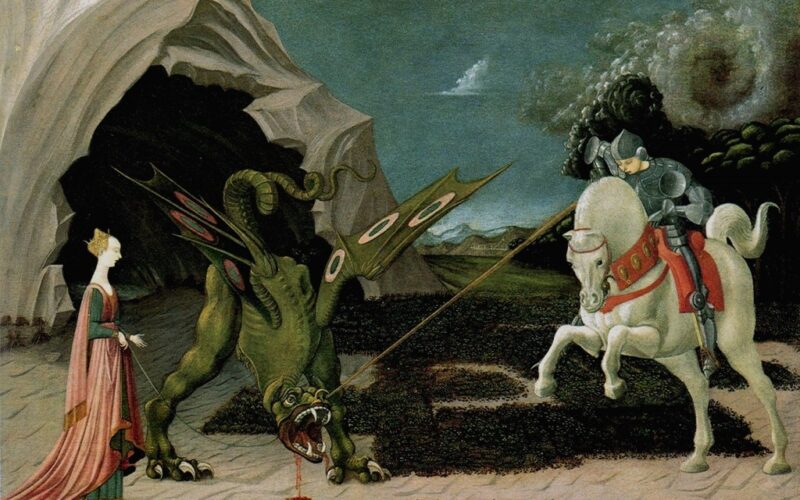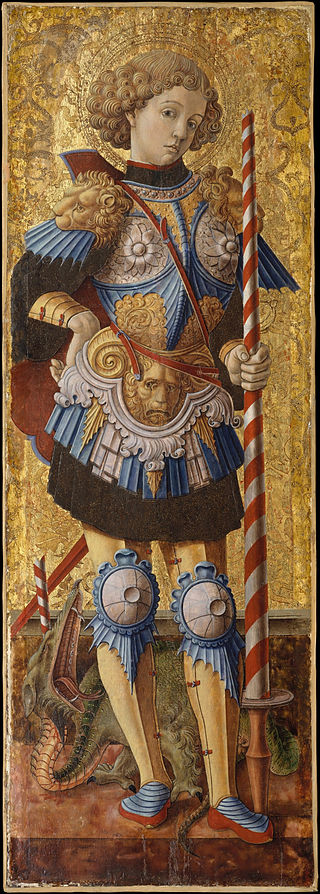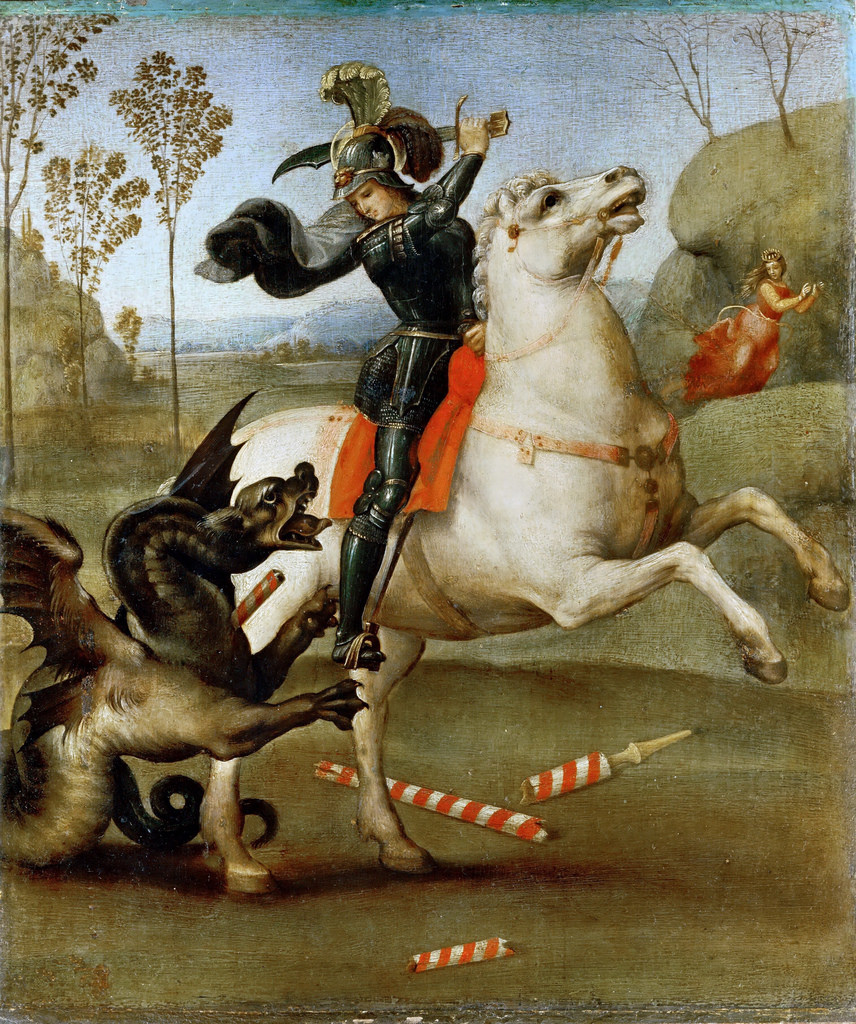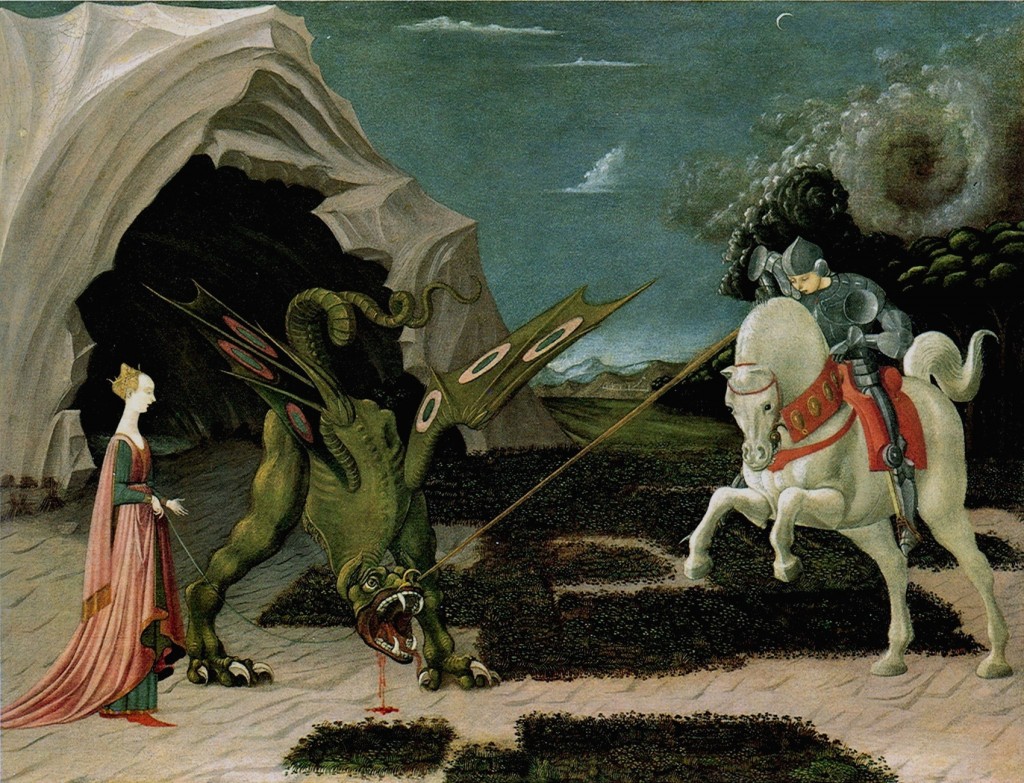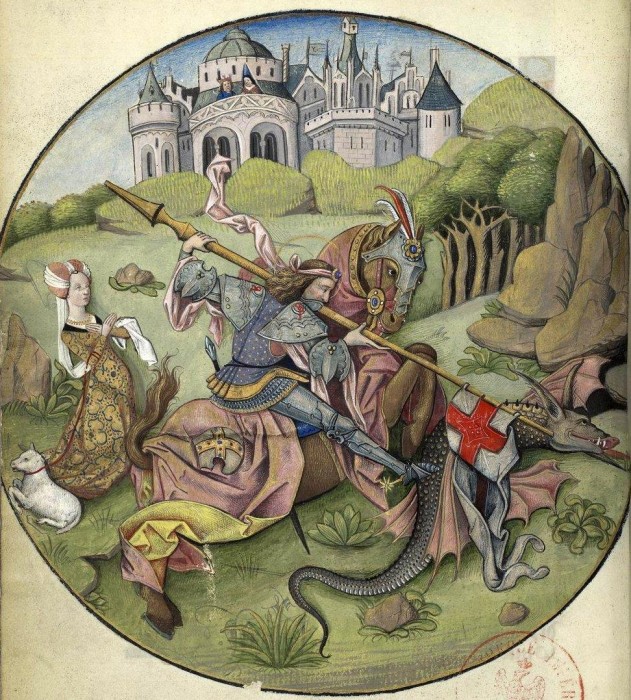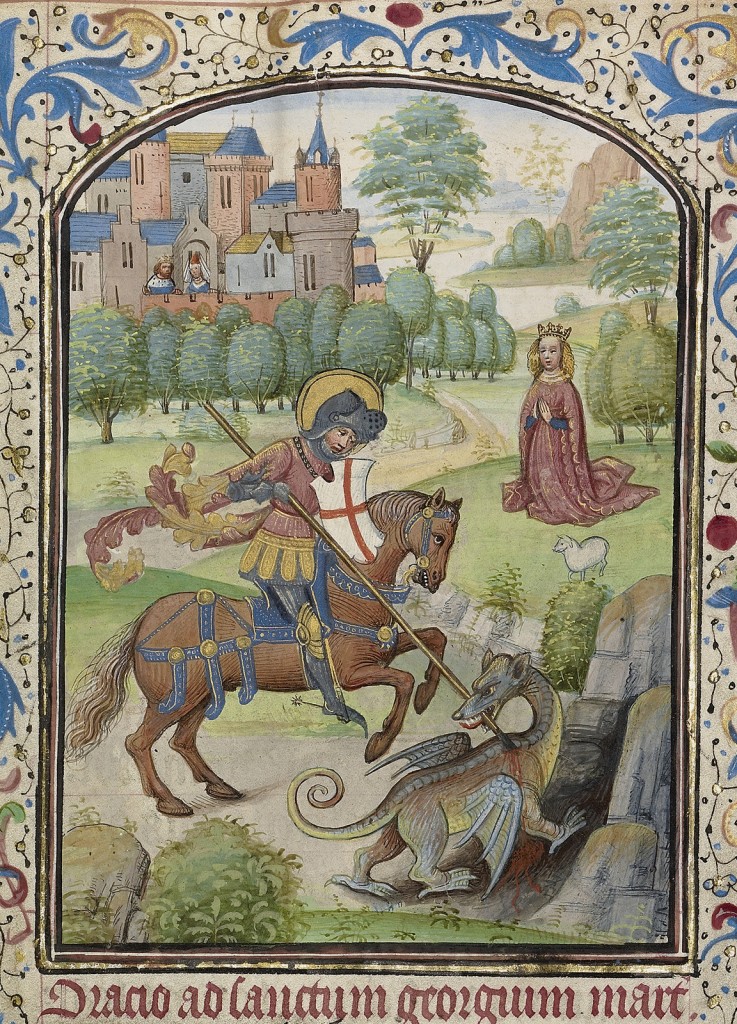On April 23rd, we celebrate Saint George, the patron saint of numerous groups tied to military and chivalric traditions. These include Archers, Knights, Soldiers, Halberdiers, Armorers, and more. Even Scouts and Guides see him as their protector. This saint is easily recognized in artistic representations by his distinctive attributes: the dragon, elegant armor, the palm of martyrdom, the banner with a red cross on a white background, and, of course, a princess.
Saint George is famous not only for his style but also for his role as a dragon slayer, a symbol of evil and paganism in medieval narratives. Among the saints who share this feat are figures such as Theodore, Silvester, Margaret, Martha, and the Archangel Michael, the latter known for his battle against the apocalyptic dragon.
Despite the lack of verifiable historical details about Saint George’s life, it is known that he was a soldier from Cappadocia, martyred under Emperor Diocletian. Stories about him are the result of medieval elaborations enriched with details over the centuries.
Saint George’s most famous miracle, the slaying of the dragon, is described in detail in Jacobus de Voragine’s “Golden Legend.” According to the tale, to appease a dragon threatening the city of Selem in Libya, the inhabitants sacrificed young victims chosen by lot. It so happened that the king’s daughter was chosen, but at that moment, Saint George appeared. With great courage, the saint managed to tame the dragon, and the princess used her belt to lead the subdued beast into the city, an event that led to the conversion of the king and the entire population.

